Geyherella: characteristics, care and reproduction
Geyherella is a herbaceous plant that was formed by crossing tiarella and geychera. This plant has a very attractive appearance, which allows you to use it to decorate flower beds and also add variety to landscape design.
Content:
- Description of the plant
- Features of heycherella care
- Plant propagation
- Heycherell diseases and pests
Description of the plant
Heycherella leaves are very beautiful in color. The color of the leaves combines bright green, purple and yellow. They are characterized by density, and in white heycherella, they are strongly dissected.
The leaves of this plant are able to maintain their appearance right up to the very frosts. This plant blooms in July-August.
Heycherella flowers are characterized by fluffiness. All flowers of this plant are collected in a panicle, which gives originality to the appearance of this plant.
Heycherella grows in sunny or semi-shaded areas, which are characterized by looseness and moderate moisture levels.
Geyherella belongs to the category of perennial plants and grows in the same area for 2-3 years. The roots of this plant are quite thick, they are located very close to the surface of the earth. The heycherella bush has a spherical shape, which makes it especially attractive.
The height of the bush is rather low, which allows it to be planted as a curb plant.
Features of heycherella care
Heycherella is a non-capricious plant.
They are characterized by a high level of frost resistance and are able to withstand frosts under snow down to -40 degrees.
Caring for this plant is quite simple:
- In the fall, after the first frost, it is necessary to mulch the bush. This will prevent the plant from bulging in spring, which can lead to its death.
- This plant can grow in the shade and tolerate drought. But for better blooming of the bush, it must be systematically watered. In wet soils, the bush grows much more luxuriantly.
- Geyherella is capable of germinating in any soil. But, it is best to plant this plant in well-drained soils, which are characterized by low moisture capacity.
- Heycherella must be planted in clay soil or in sandy soil that has a sufficient amount of humus.
- In order to extend the flowering period of Heycherell, it is necessary to systematically feed them... For this, you can use humus or complex fertilizers.
Plant propagation
Reproduction of these plants must be done in the second half of the summer.
This action is performed with by dividing cuttings... During this period, the roots are able to sprout much faster than in spring. Some varieties of this plant can sprout. Some of the varieties of this plant need to be separated very often for the purpose of rejuvenation. This prevents the stems from pulling out and the tops from drying out.
This plant reproduces in several stages, which include:
- Digging up a bush.
- Cutting off the dried-up parts of the bush.
- Separation of rhizomes into parts.
- Burying parts of the bush in the ground.
- Watering the bush.
If there is no need for reproduction of heycherella, then it can be transplanted as a whole, only to remove the shoots of rhizomes.
Heycherell diseases and pests
If you take proper care of this plant, then heycherella will not succumb to diseases and various diseases will not attack it.
Most often this plant is attacked by slugs, which gnaw holes in its leaves:
- Mucus remains on the leaves after pests.
- In order to intimidate the slugs, it is necessary to treat the soil under the heycherella bushes with fluffy lime.
- This procedure is done during the increased activity of slugs - in the evening or in the morning.
- Very often this plant succumbs to the attacks of the furrowed weevil, which feeds on thin roots. This causes the top of the plant to dry out.
- You can get rid of this pest with sawdust. They must be soaked in creolin (one or two tablespoons of creolin are needed for one bucket of sawdust). This mixture must be scattered around the bushes.
- Also, mustard powder is often used against pests, which must be diluted in water in the proportion of one spoonful of mustard per liter of water. This solution must be sprinkled with heycherella bushes.
The disease is also rarely tolerated by this plant.
But still they do happen. Heycherella is often attacked powdery mildew... This disease is characterized by the appearance of white blooms on the leaves of the plant. To combat this disease, a special fugnicide is used.
Wet and warm summers can cause brown spotting on Heycherells. This disease can greatly spoil the appearance of the plant. During this illness, light brown spots of various shapes appear. To combat this disease, drugs that contain copper are used. It is necessary to spray the heykherella bushes once every two weeks.
Heycherella is very resistant to diseases and pests. In order to avoid damage to the plant, it must be provided with full care.
More information can be found in the video.



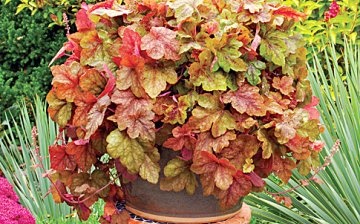
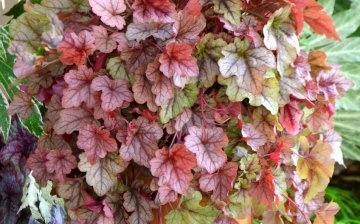
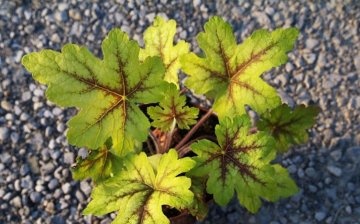
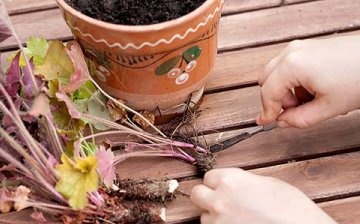
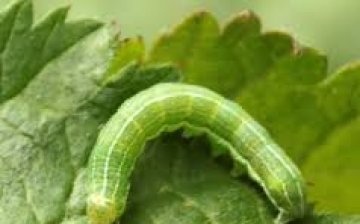







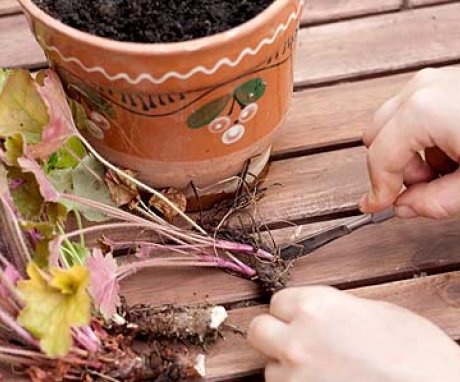
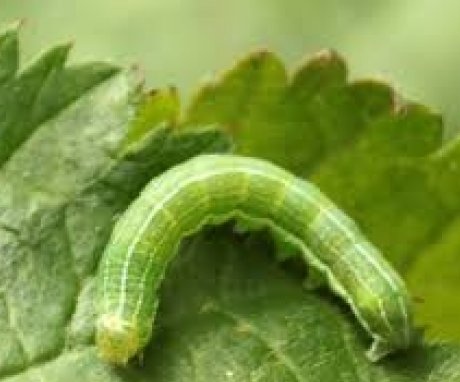
Is it possible to start this plant for novice gardeners? As I understand it, it is not very easy to look after, I liked it very much, it can decorate my garden, but I am afraid that I will not master it.